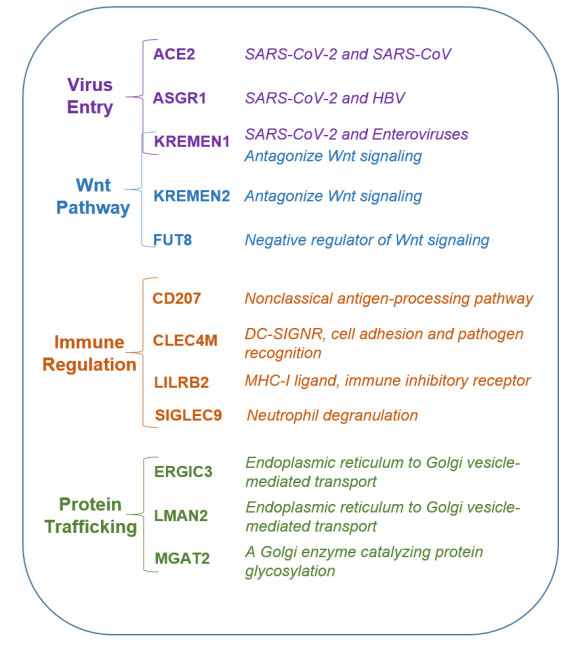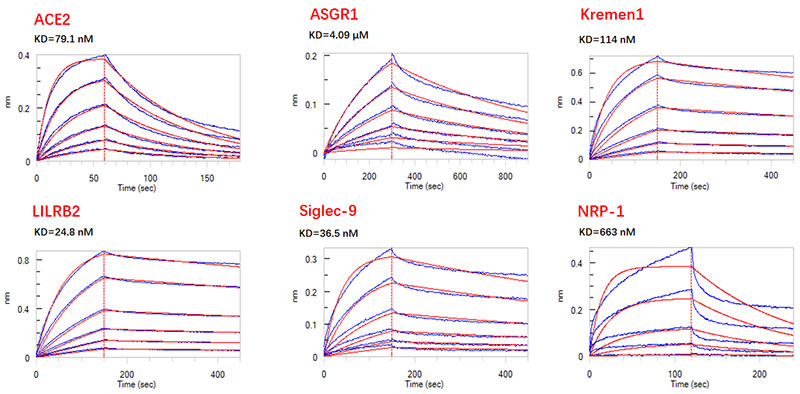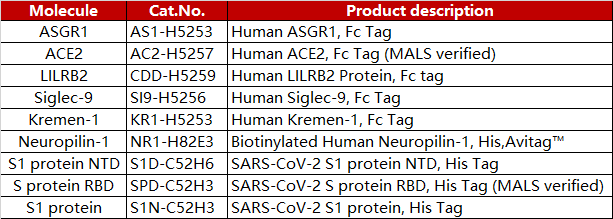
Leave message
Can’t find what you’re looking for?
Fill out this form to inquire about our custom protein services!
Inquire about our Custom Services >>


































 Request a FREE Sample of our FcRn Binding Kit!
Request a FREE Sample of our FcRn Binding Kit! Request a FREE Sample of our Fc gamma RI / CD64 Binding Kit !
Request a FREE Sample of our Fc gamma RI / CD64 Binding Kit !
 Happy Holiday! Limited Keychain here with your next order
Happy Holiday! Limited Keychain here with your next order Happy Holiday! Limited Keychain here with your next order
Happy Holiday! Limited Keychain here with your next order
 Request a FREE sample of our GMP products!
Request a FREE sample of our GMP products!  Request a FREE sample of our GMP products!
Request a FREE sample of our GMP products!
Spreading rapidly worldwide, Covid-19 is recognized as the most severe global public health emergency in history by the World Health Organization. Covid-19 has become a huge threat to human health safety and global economics. Besides, it poses a real challenge to global health governance and human
sustainability.
The SARS-CoV-2 can infect multiple organoids causing fever, cough, and some other severe respiratory diseases. The host cell receptor is a key to viral infection and pathogenesis.
Viral particles attach to a variety of receptors to enter the cell or trigger specific host responses, like cytokine release, immune responses stimulation, and virus replication [1]. Therefore, host cell receptors have become a key focus for therapeutic and vaccine development.
Click onto learn more what ACROBiosystems has developed to expedite your COVID-19 related research:
Figure 1 Mechanism of viral entry
ACE2 is widely known as the key receptor for cell entry of SARS-CoV-2. At the beginning of the SARS or SARS-CoV-2 infection, ACE2 is like a "doorknob". The virus grabs it and opens the door to enter the cell. However, ACE2 expression is limited in human tissues, which cannot fully explain the multiple organoid infections observed in COVID-19 patients. For example, in virus-positive organoids such as the brain, liver, peripheral blood (PB), and even lungs, ACE2 expression is rare or detected in a small group of cells. [2] Therefore, we suspect there are other receptors besides ACE2 facilitating the infection.
To identify the host cell receptors involved in the SARS-CoV-2 infection, the scientists performed genomic receptor analysis using the spike (S) protein as the target. They identified twelve membrane protein receptors involved (Figure 2). Most of the twelve receptors bind to at least two domains on the S protein, mainly the receptor-binding domain (RBD) and the N-terminal domain (NTD). This finding indicates that the RBD and NTD are critical for virus-host interaction. The dissociation constant (KD) of the receptor and the extracellular domain (ECD) of S protein is 12.4-525.4 nM. [1]

Figure 2 Proteins involved in the infection process.
ACE2:
ACE2 is mainly expressed in epithelial cells, while ASGR1 and KREMEN1 are abundant in epithelial cells and immune cells. ACE2 is the primary receptor for host cell entry of SARS-CoV-2.
ASGR1 and KREMEN1:
ASGR1 plays a critical role in serum glycoprotein homeostasis by mediating the endocytosis and lysosomal degradation of glycoproteins. It helps the host cell invasion of the hepatitis C virus [3-4].
Wnt/β-catenin signal transduction is essential for taste bud cell renewal and behavioral taste perception. KREMEN1 is a negative regulator of this pathway, which can antagonize the WNT signal transduction. Most of the enteroviruses enter the host cells through the KREMEN1 receptor. COVID-19 patients often experience odor and taste loss, suggesting that ASGR1 and KREMEN1 are involved in the infection, thereby affecting Wnt/β-catenin signaling. [5-7] ASGR1 and KREMEN1 are speculated to be co-receptors of SARS-CoV-2. Through pseudovirus-cell assays, scientists found that ASGR1 and KREMEN1 receptors can invade the host cell independently without ACE2. [1]
LILRB2 and SIGLEC-9:
The interaction between the virus and the host receptor can induce cytokine release, apoptosis, and immune response stimulation. Both LILRB2 and SIGLEC-9 are expressed in myeloid cells, and COVID-19 can cause the excessive activation of myeloid cells. The receptor may be involved in the activation of pro-inflammatory monocyte-derived macrophages, which causes local inflammation. [1,8,9]
Neuropilin-1:
Studies have confirmed that SARS-CoV-2 S protein can bind to neuropilin-1 on the host cell surface through the CendR domain of the S1 subunit. The interaction of the S1 CendR domain and Neuropilin-1 may help the invasion and infection of SARS-CoV-2. [10]
In summary, host cell receptors are critical for viral infection and pathogenesis. In addition to ACE2, SARS-CoV-2 can also interact with multiple receptors to invade the human body. These receptors are likely to interact with SARS-CoV-2 under different environmental or physiological conditions, trigger different signals, and ultimately lead to the viral infection and host immune response, thereby promoting the pathogenic process of the virus.
ACROBiosystems developed all these receptor proteins we discussed earlier, including ACE2, ASGR1, Kremen1, LILRB2, Siglec-9, and Neuropilin-1. We verified their bioactivity using BLI, and the results are summarized below. The results show that these receptor proteins bind specifically to the S1 protein.


Related products

Find out more SARS-CoV-2 related host receptor proteins
This web search service is supported by Google Inc.







